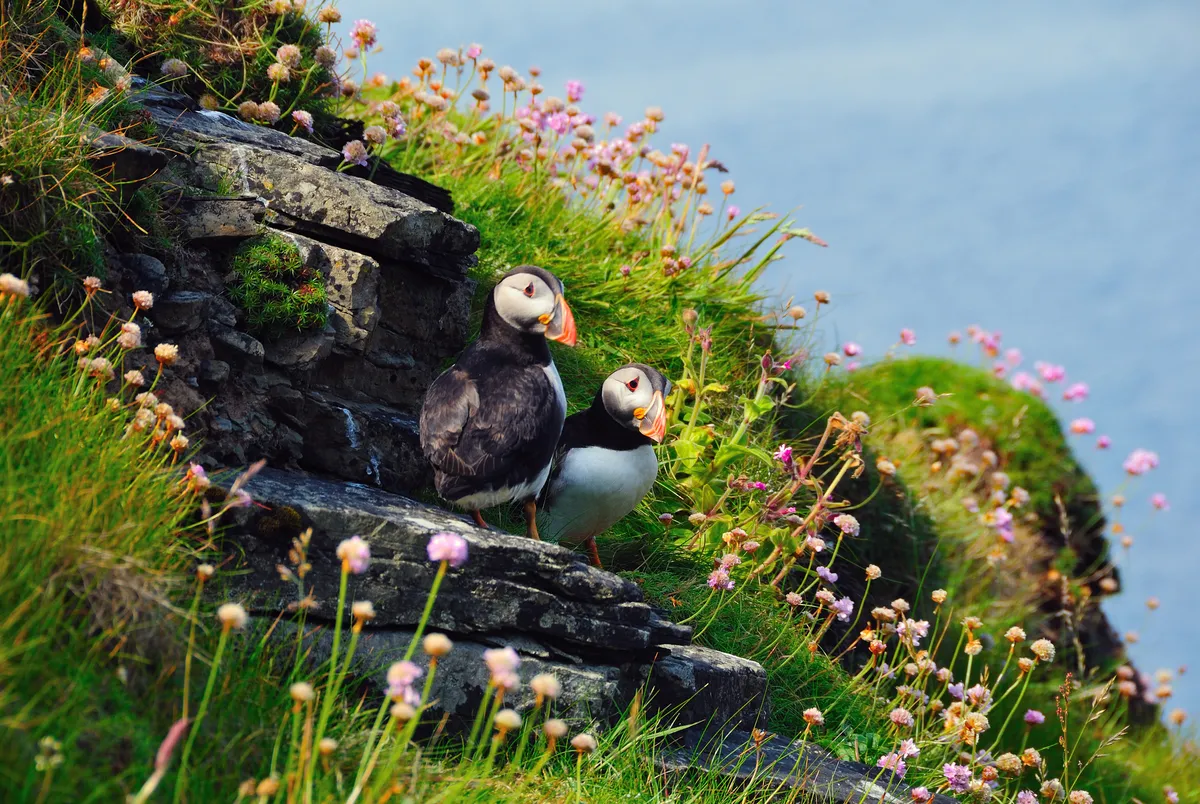With their brightly-coloured beaks, puffins are charismatic seabirds and loved by many.
It has been suggested that we adore puffins, or ‘sea parrots’ as they are traditionally known in northern Scotland, because their rotund features and comical gait on land remind us of human babies. That may be a little far-fetched, but there’s no doubting the affection in which we hold these auks.
Learn when puffins breed, what they eat and the best places to see them in the UK in our expert puffin guide.
What is the scientific name of the Atlantic puffin?
The scientific name of the Atlantic puffin, also known as the common puffin, is Fratercula arctica.
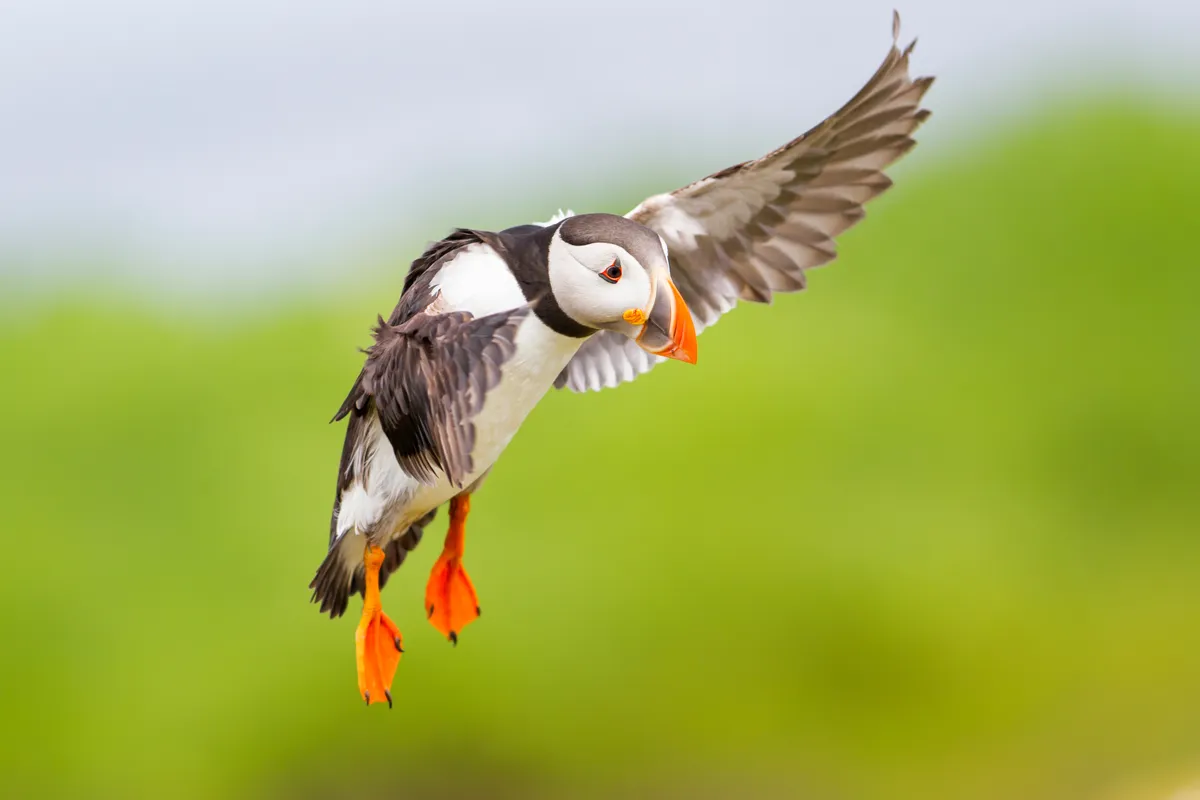
It is one of three puffin species, all belonging to the Fratercula genus. The other two species are the tufted puffin (Fratercula cirrhata) and the horned puffin (Fratercula corniculata).
How big is a puffin?
Despite being pint-sized seabirds at just 27–28cm in length, Atlantic puffins are extremely tough, braving storm-tossed seas throughout autumn and winter, out of sight of land.
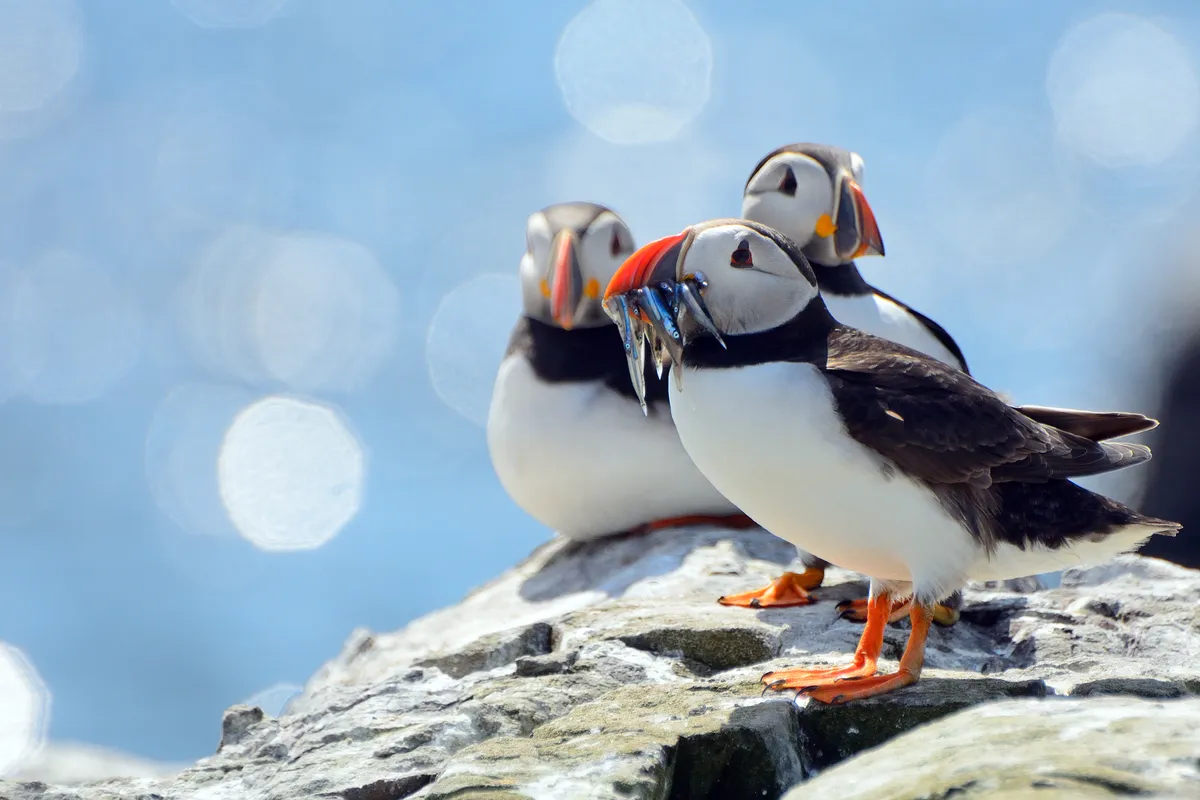
When is the best season to see puffins in the UK?
The UK's puffins spend the winter out at sea (there's a reason our puffin species is properly called the Atlantic puffin), so you need to schedule a trip to a breeding colony during spring or summer if you want to see these comic delights.
When is the puffin breeding season?
Adults return to their breeding colonies on grassy cliff tops in March and April, departing again in mid-August, and the sight and sound of a puffin rookery has to be experienced to be believed.
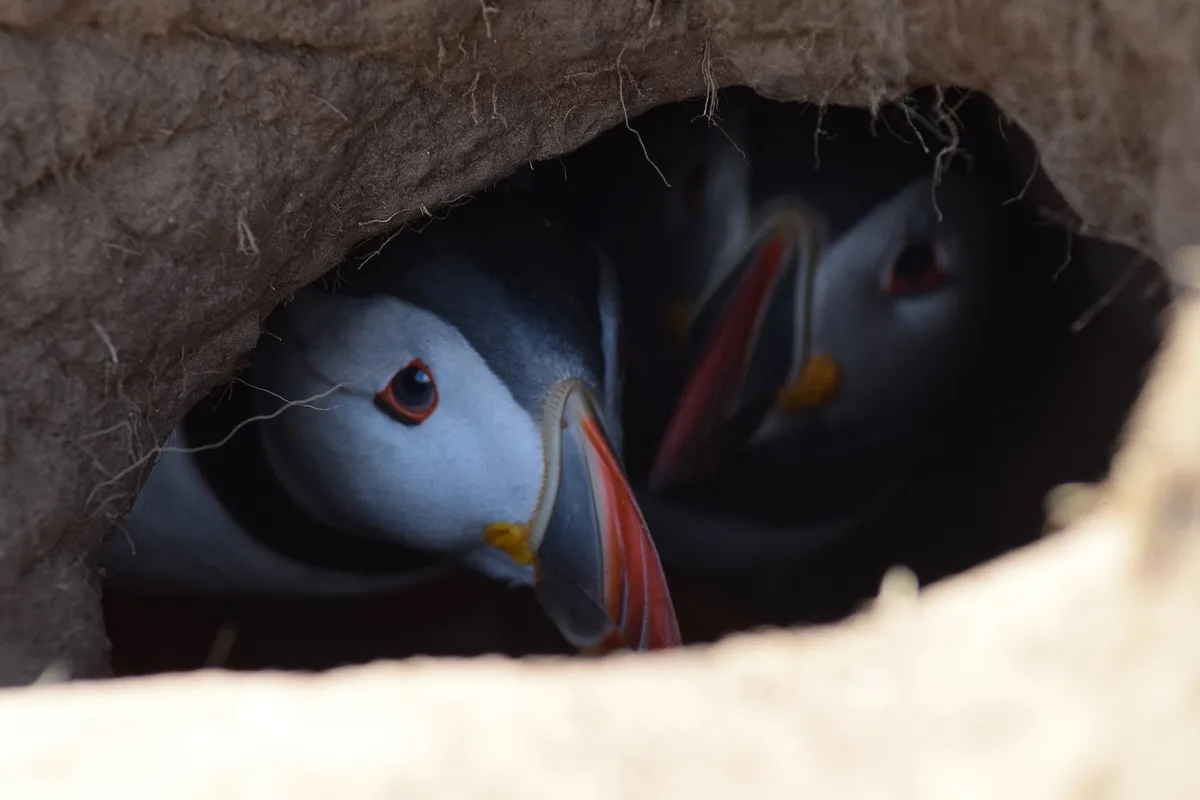
What is a baby puffin called?
Baby puffins are called pufflings or chicks.
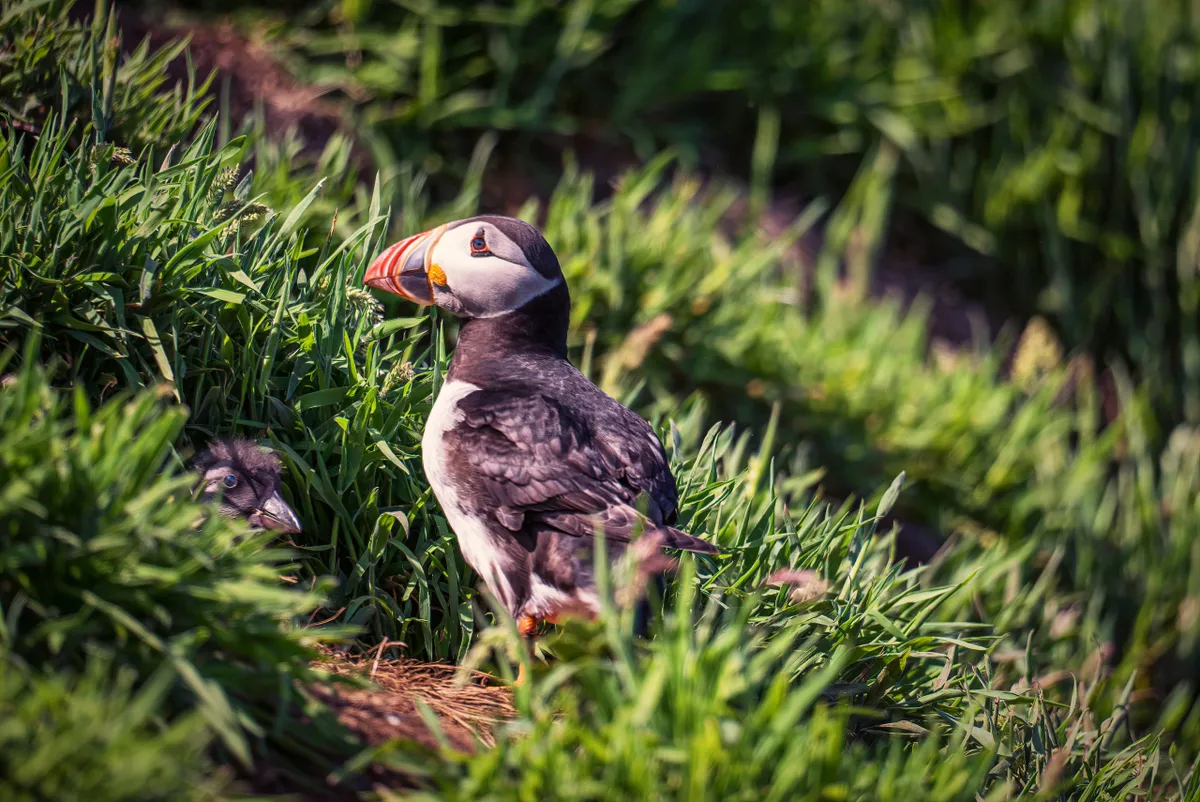
After hatching the puffling remains safely below ground for six weeks before heading to sea under cover of darkness to avoid marauding gulls and skuas. It will be four or five years old before it breeds.
Please note that external videos may contain ads:
Cute Baby Puffin Sees World for the First Time! | World Beneath Your Feet | BBC Earth
What do puffins eat?
Puffins are carnivores and tend to eat small fish such as sandeels or herring. Parents spend the summer catching fish, mostly sandeels, before carrying them to their hungry youngster in its burrow.
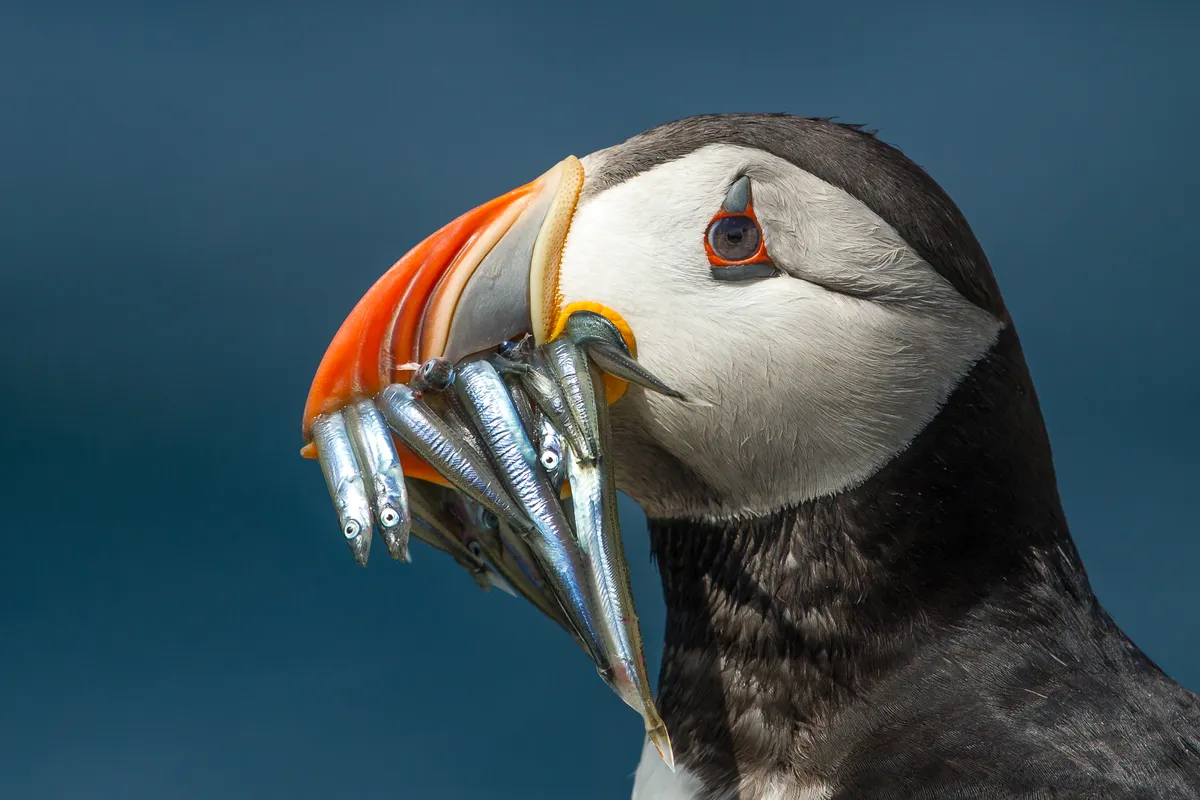
Why are puffins such good fishers?
A puffin has two adaptations that enable it to take lots of fish in one go: a modified tongue and a series of spines on its upper palate.
A puffin's tongue is mostly fleshy, but the end section is very rough and coarse, which helps the bird to contain its slippery prey. Once it has grabbed a fish, a puffin uses its tongue to push the prey against the spines above, enabling it to seize more fish without losing those it has already caught.
Please note that external videos may contain ads:
Puffin Hunts Fish To Feed Puffling | Blue Planet II | BBC Earth
A puffin's tongue is actually a cross between the larger, rigid tongue of a guillemot (which provides effective leverage for holding individual, bulky prey items) and the fleshy tongue of a little auk (which is better suited to handling small organisms).
This design gives the puffin great flexibility in its diet - it eats mostly fish in summer, but smaller items, such as crustaceans, during winter.
The number of fish a puffin can carry depends on their abundance and size. In the UK, 5-20 is the norm, but the record is 61 sandeels and a rockling.
What noise does a puffin make?
Puffins don't make noise while at sea, however on land male puffins grunt and flick their heads in an attempt of attracting a female mate. In breeding burrows puffins can sometimes be heard making a low growling noise.
Please note that external videos may contain ads:
Puffins Pairing Up | Stormborn | BBC Scotland
How to avoid disturbing a puffin colony
When you visit a colony, approach the puffin groups slowly and quietly, but don’t get too close. If you stay at a safe distance you should be able to watch them moving around, investigating burrows, meeting and greeting, fighting and posturing.
Look for two birds ‘billing’ by repeatedly and loudly hitting their beaks together, which is thought to strengthen the pair bond. The behaviour can attract a crowd of other puffins as onlookers, one of which may try to join in. A fight can break out if one of the pair rejects the interloper and gives them a bite.
Never, ever disturb fish-carriers taking vital sustenance to their young. Puffin life is hard enough without having to contend with human interference.
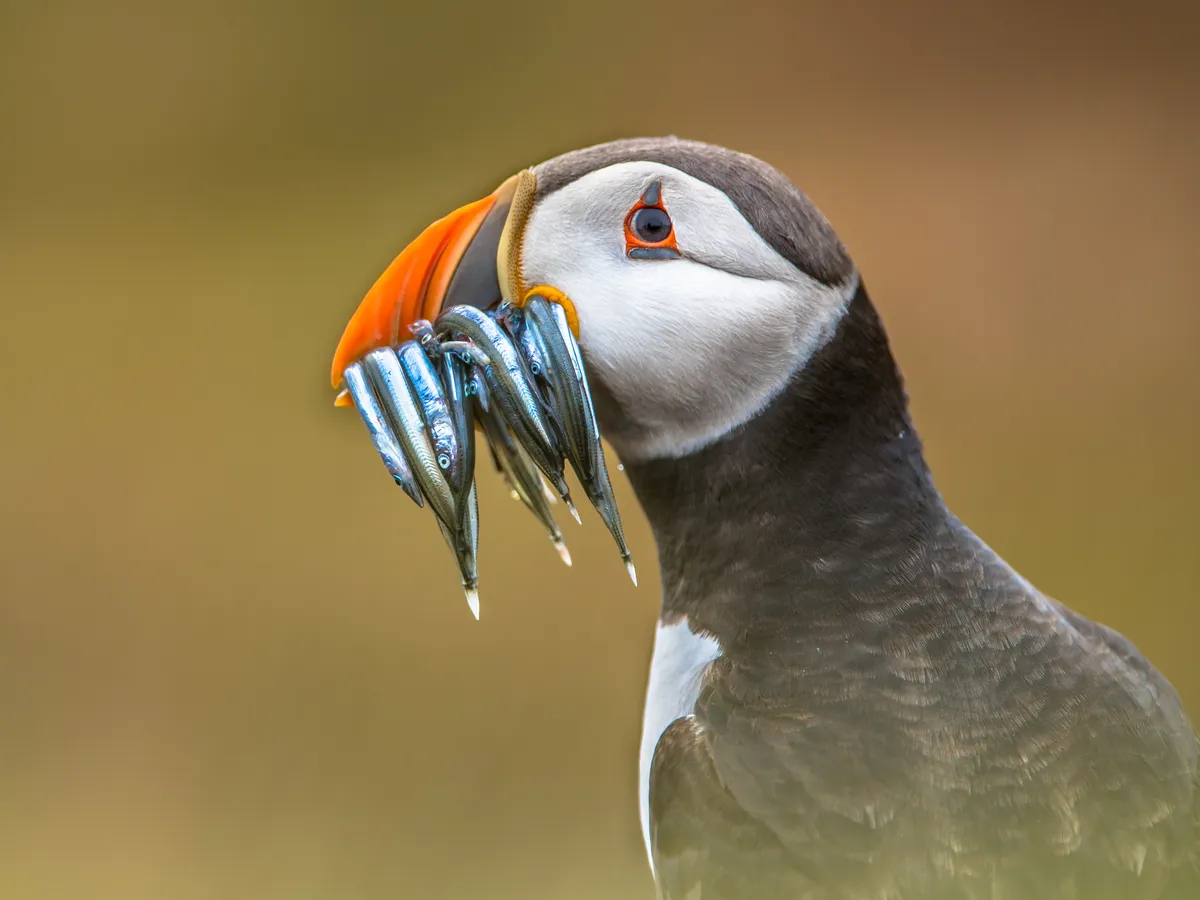
The best places to see puffins in the UK
A few places, such as the Bullers of Buchan north of Aberdeen and Bempton in Yorkshire, have small mainland colonies, but most are on islands. So plan ahead, book boat passages but be prepared for disappointment if bad weather prevents sea crossings.
Easier puffinries to reach by boat include Skomer from Martin’s Haven in Wales, the Farne Islands off Seahouses in Northumberland, and the Isle of May from Anstruther in Fife.
1
Hermaness and Sumburgh Head, Shetland, Scotland
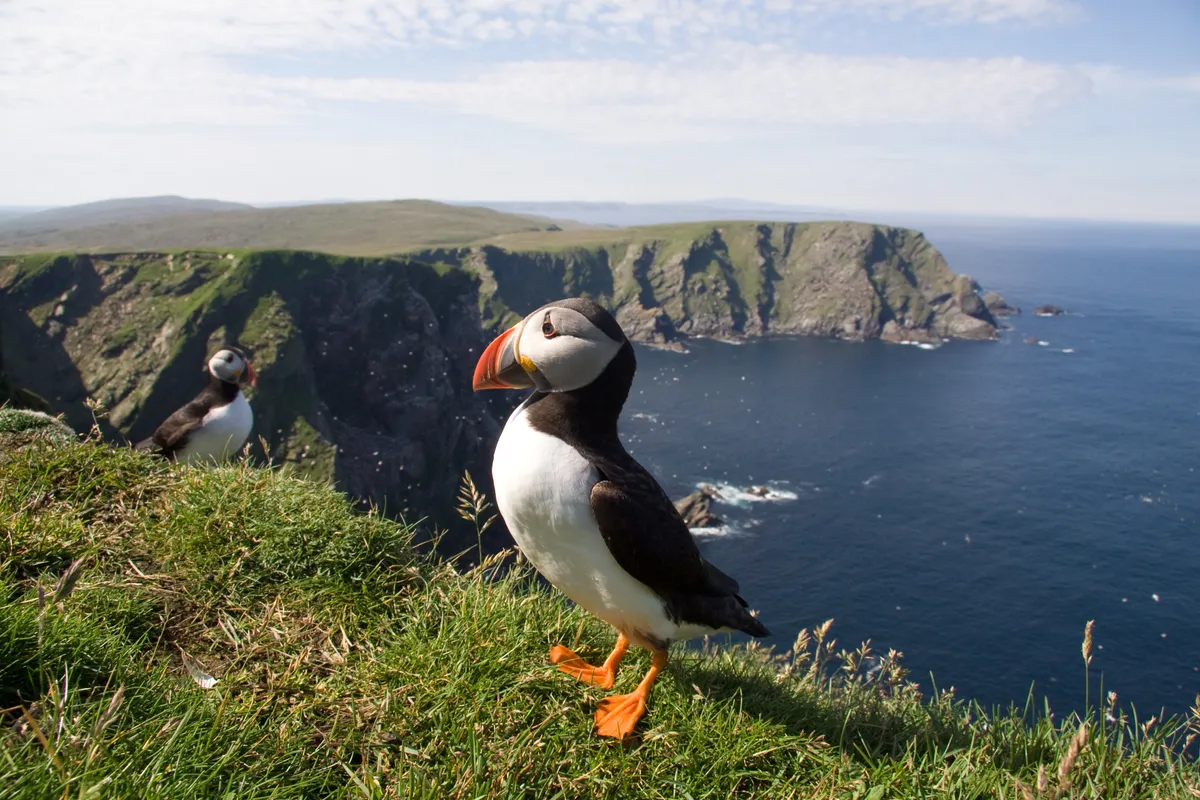
2
Fowlsheugh RSPB, Aberdeenshire, Scotland
3
Isle of May and Craigleith Island, Fife, Scotland
4
Farne Islands, Northumberland, England
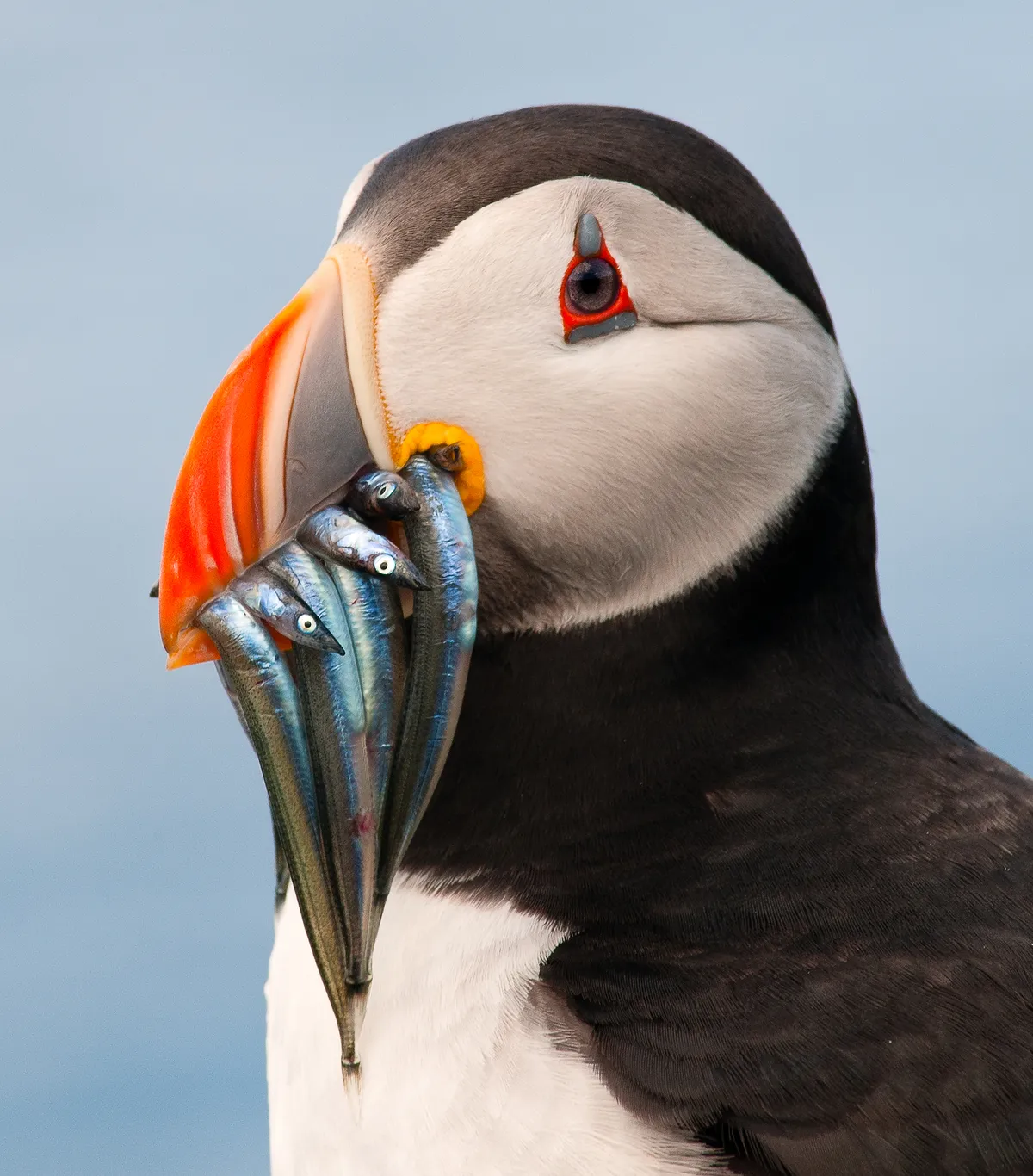
5
Bempton Cliffs RSPB, Yorkshire, England
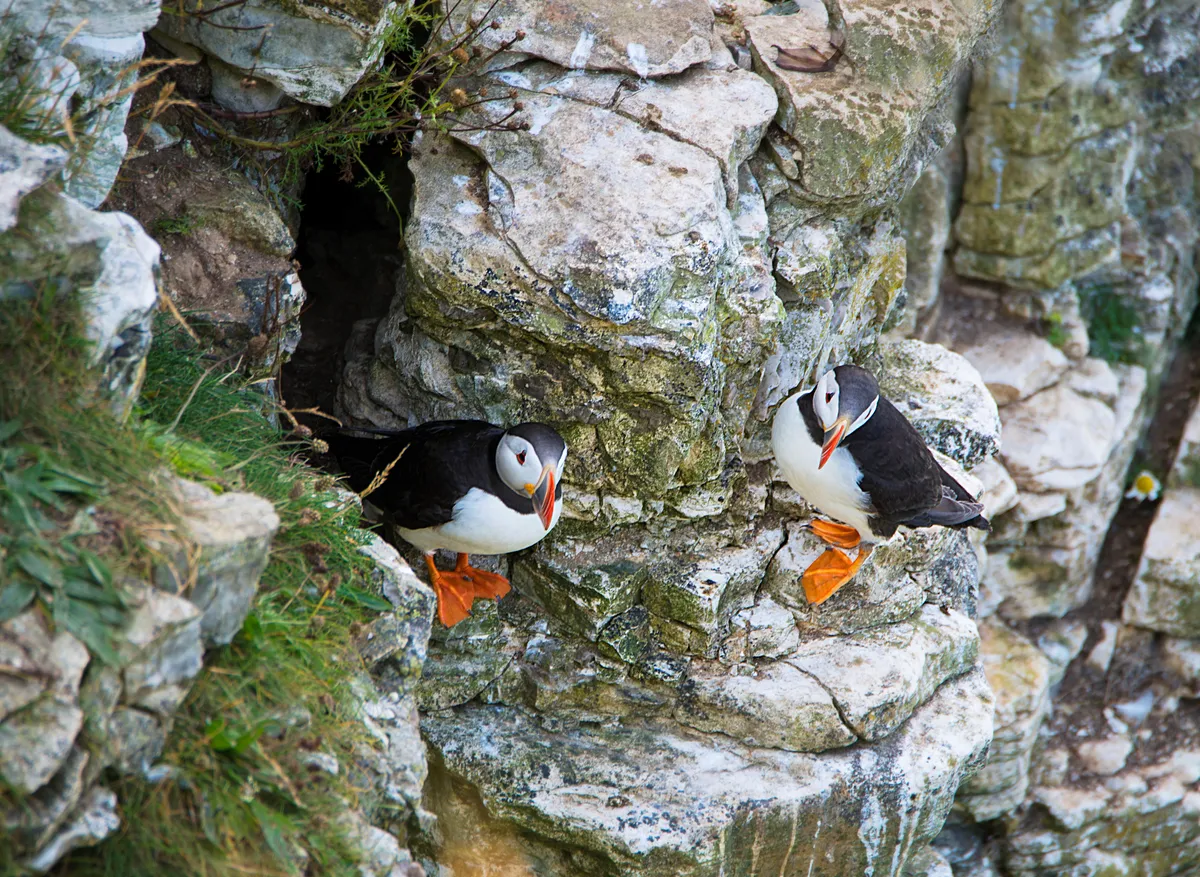
6
South Stack Cliffs RSPB, Anglesey, Wales
7
Skomer Island, Pembrokeshire, Wales
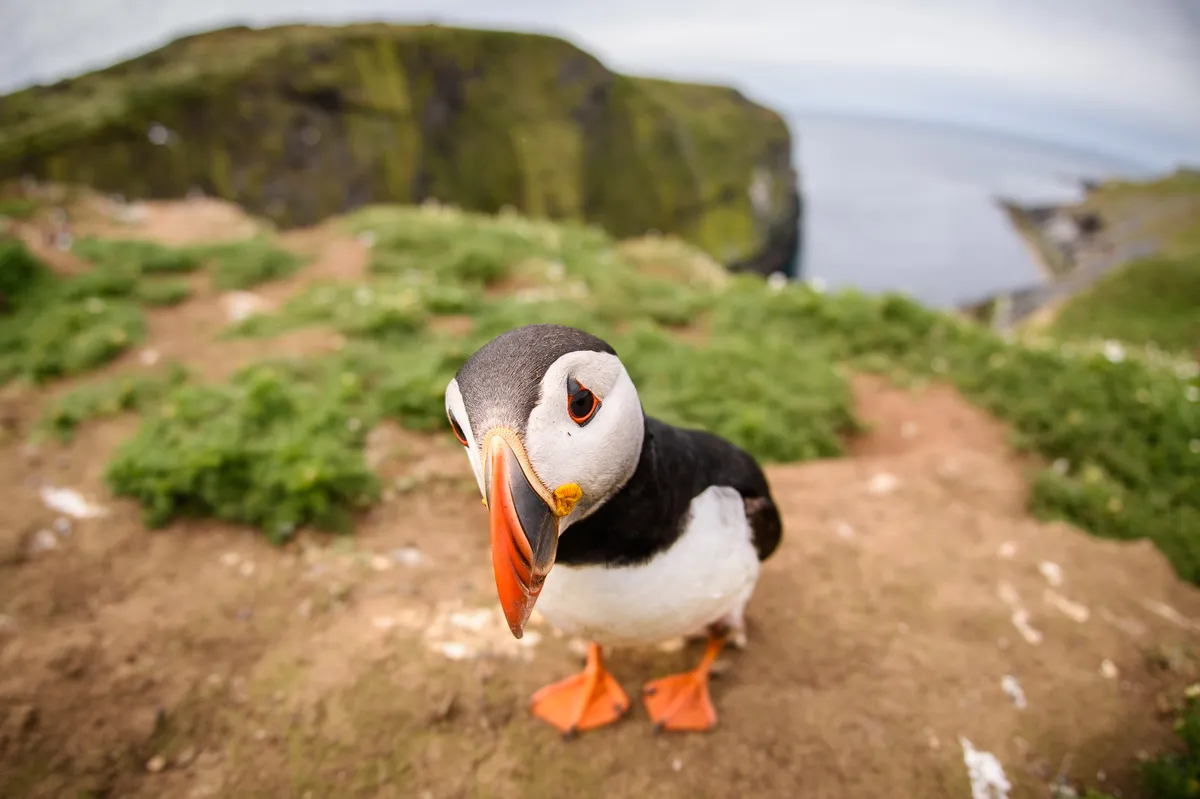
8
Rathlin Island, County Antrim, Northern Ireland
9
Westray and Papa Westray, Orkney, Scotland
